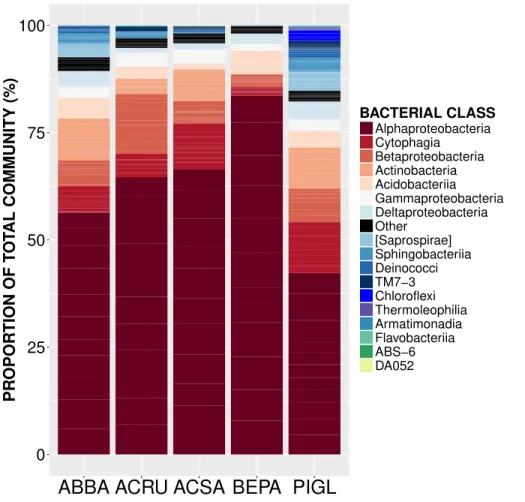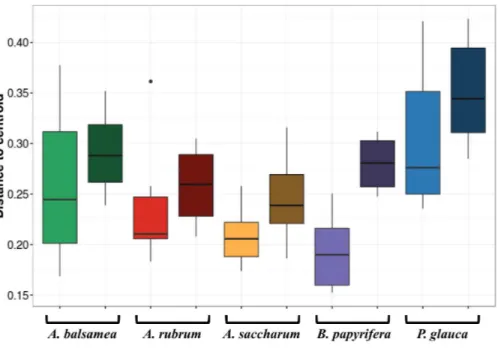Tree phyllosphere bacterial communities: exploring the magnitude of intra- and inter-individual variation among host species
Texto
Imagem




Documentos relacionados
Denaturing gradient gel electrophoresis (DGGE) analysis of bacterial communities in surface species tree leaves mangrove in different. localities (Bertioga
We tested nestedness using NODF index and evaluated the environmental variability using the multivariate homogeneity of group dispersions (PERMDISP), separately for flood and
So, various problems concerned with the analysis of variance and other approaches to analyze such data are discussed in the paper, including checking within-group normality
The growth of three tropical grass species ( Brachiaria brizantha, Brachiaria decumbens and Paspalum notatum ) and the survival of root-associated bacterial communities was
There was a tendency of MBTB performance to improve as the sample sizes increase, considering that it presented type I error rates not significantly different
The Cercidiphyllum japonicum communities in the present study had different vegetation types in the Shennongjia Reserve, mirroring the effects of key environmental
Color in alcohol. Body dark brown to dark gray with black blotches, fins turn yellow to light brown. Laguna de la Media Luna and río Verde. Canonical variance analysis derived from
The growth of three tropical grass species ( Brachiaria brizantha, Brachiaria decumbens and Paspalum notatum ) and the survival of root-associated bacterial communities was

